Notes from Nature Returns
Back to the Birds, Back to the Words
This post may be truncated in email, so if you’d like to enjoy the full experience - please do consider viewing via the Substack App
I’m sorry it’s been a while! As some of you will know, I took the decision to step back from Substack at the beginning of summer. The business of life took over and I struggled to keep up with the pace, something had to give, and sadly it was this newsletter.
This year was the first time I truly felt the surge of energy over the summer months – largely thanks to paying attention to what was happening in nature. Everything was blooming, growing, breeding and thriving. If I’m honest, I don’t think I was ready for it. I found myself overwhelmed and exhausted.
This season, I’m being more intentional and taking my cues from the world outside my window. Autumn will be my time for shedding things no longer required, and harvesting the best of this year’s growth, looking for seeds of potential in the things I need to cut back. This is a time for finishing off projects rather than starting new ones - and leaving space for a restful winter. I hope that by taking this approach, that next summer will be less overwhelming.
In the garden I can feel the slowing in pace. The birdsong is more sporadic, the cacophony that rose in spring has quietened. There are more solitary bird calls, mostly crows and ravens, and the occasional robin song. Nests have been abandoned, and the plants are setting seed. The young birds and mammals who frequent my space are getting big and strong enough to hopefully survive the colder months.
As nature is beginning to withdraw, so am I. As I’m drawn back to my keyboard, to share some of my nature moments with you once again, I thought you might like an update on summer in my wildlife garden.
Summer was a whirlwind. My favourite time was the evening, when the heat subsided and I enjoyed a short walk through my village, past the wheat fields, accompanied only by the chirping of crickets and the chattering of swallows as they swooped through the air chasing insects, or balanced like acrobats on the overhead powerlines.
After the driest spring on record, the creatures were grateful of the water I provided for them. It was a constant job to keep the water bowl filled. At least once, sometimes several times a day, I trekked down to the bottom of the garden with a watering can. My hastily improvised dog bowl was woefully inadequate. Despite that, it still proved popular, as you can see in my post Water for Wildlife.
During the summer months I witnessed a lovely little great tit trying to claim the dog bowl as his personal bathing spot. He got very possessive, even chasing off larger birds. Then the young crows and magpies attempted to follow suit. It was heart-breaking to watch them attempting to bathe but only being able to dip in a wing or dunk their chest.
I made up my mind to improve the situation, so in the last week I have upgraded it to a larger bowl. I’ve popped in a couple of stones for perching, and to hold it down in the winds. It is proving to be a great success, with sparrow communal bathing and a happy gathering of birds perching side by side enjoying a drink. My little great tit can even enjoy a bath without having to chase off other drinkers.
This summer was a bumper season for ladybirds, and ladybird spotting is still one of my favourite pastimes. If you follow me on notes you are likely to see plenty of ladybird photos in the coming weeks! I hope this is a testament to the ecosystems I’m creating here. After discovering that they adore my hazel hedge - my daily ladybird spotting was replaced with spotting ladybird larva. I found several of these little black alien-like creatures and watched over the course of a few weeks as they slowly shed their exoskeletons to become the black and red beauties we know and love. It felt like quite the privilege to witness their transformation.
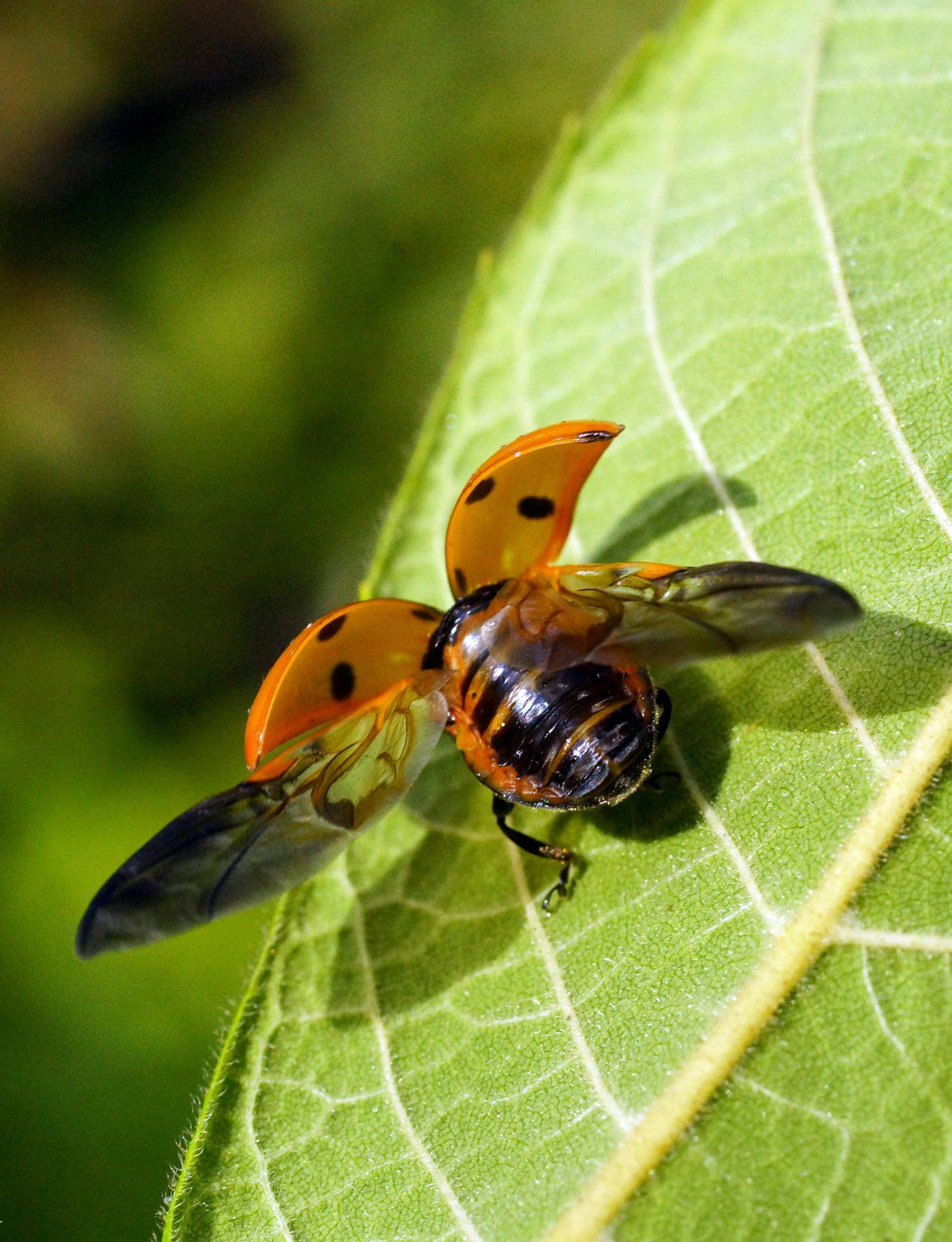
I also discovered that my mountain cornflower was a favourite hang out. You can see this in the video below:-
My new wildflower bed has been a raging success, strategically built around our patio so I can sit close to the action. We picked up several packs of mixed flower seeds from our local supermarket and just scattered them across the soil. I was a little concerned that I might have to thin them out – but decided to let nature take its course, and it’s been spectacular.
It may look a little messy looking for some people’s tastes, but the ladybirds, bees and butterflies adore it. Every day a new flower appears. This has been going on over the course of the entire summer and continues even now.
Summer for me was all about the butterflies. I planted way too many buddleia in my front garden several years ago, and every year I vow to thin them out, replacing them with other nectar rich plants. But every year, by the time I get round to thinking about taking action, they are covered in butterflies: tortoiseshells, red admirals and peacocks, the occasional hummingbird hawkmoth and large whites. Occasionally I might spot the beautiful painted lady, who I have huge admiration for as it travels all the way from North Africa, the Middle East or Central Asia. The thought of such a tiny delicate creature travelling all those miles is something I find extremely humbling.
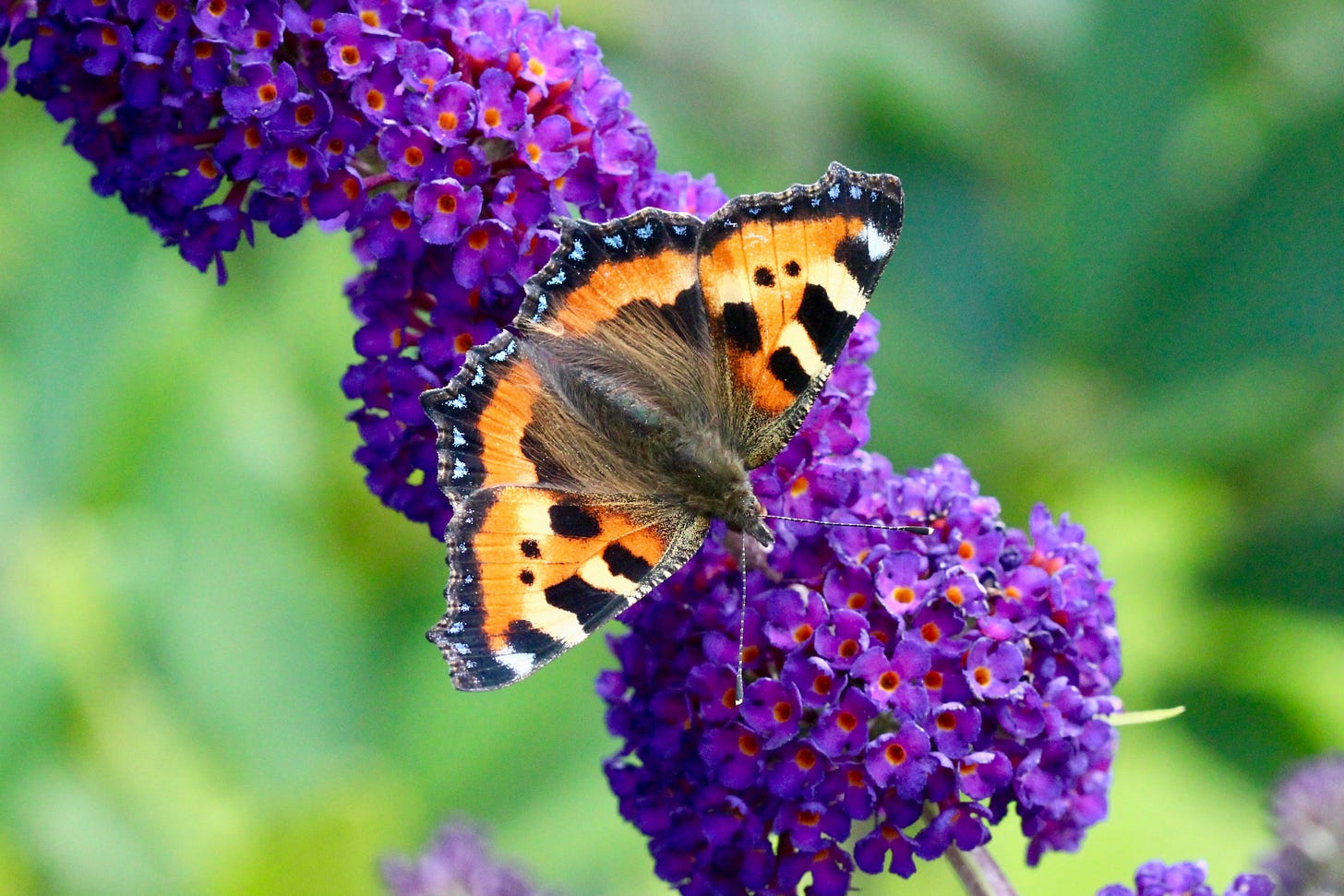
One day in July I walked into my greenhouse, with the intention of harvesting some rocket (arugula for those in the US) But I was shocked to see its leaves stripped completely. My initial horror at the lack of green was soon replaced by excitement when I spotted the reason why - scores of black, yellow and grey striped caterpillars, munching their way along the stems. These were the larva of the large white butterfly.
Within a couple of days, the number of caterpillars had dropped dramatically. My suspicion was that a little wren who I’d spotted hanging around the greenhouse at night might have been responsible. But that was until I spotted one that had crawled away from my rocket patch and settled on the wall. I wasn’t sure if it was dead, but I left it alone and the following day this is what I found:-
This transformation literally happened overnight! I’ve understood since primary school the lifecycle of the butterfly, but seeing it happen in real time was pure magic.
A few weeks later my greenhouse was filled with ephemeral large white butterflies, flitting to and fro. A little rescue mission was required to catch several of them - as they were struggling to find their way out and risked becoming ensnared in the copious spiders’ webs that adorn every corner and window ledge.
We had a great outdoor population of caterpillars too - thanks to a brassica bed that has had all hope of food production abandoned (who needs broccoli anyway?) I’m happy to sacrifice some green to ensure a garden filled with white butterflies all throughout late summer.
We also had an abundance of cinnabar moth caterpillars. Thanks to accidentally leaving our field uncut for too long, allowing the ragwort to flourish. It seemed everywhere I looked I spotted their distinctive (and highly toxic) black and yellow stripes.
The day Andrew announced he was about to mow the field - I panicked - then insisted he give me half an hour. I donned my gardening gloves and proceeded to carefully pick every caterpillar I could find off their host plant and transport them to the orchard. Here I have allowed a patch of grass to grow wild, and plenty more ragwort was to be found. I hope to be rewarded with an abundance of stunning red and black moths next summer.
The ant colony in my greenhouse is also thriving. I have a particular fondness for ants - I find them fascinating. So, instead of attacking them with ant powder, we’ve allowed them to stay in our greenhouse. We’ve accepted that for a few days in the year the space belongs to them, when many develop wings and take to the skies for their ‘nuptial flight’ to mate with individuals from other colonies. The rest of the time we live side by side and they do their thing underground, popping out occasionally to warn me off when I get overly enthusiastic with a sweeping brush.
Most years I see them scurrying around for a few weeks before the magic of flight happens. But this year it took me by surprise when I walked into a scene that looked like something from a horror movie.
Cue tiptoeing out attempting not to stand on anyone, getting as far away from the greenhouse as possible and leaving the door open to help them make a safe exit. There were a lot of happy spiders in my greenhouse that day, as dead flying ants littered the windowsills and were literally dropping like flies around me. It all sounds pretty grim, but I can assure you that plenty of ants were able to go off on their adventures, to start new colonies elsewhere - and now my spider population is thriving!
The ants weren’t the only unexpected flying visitors in my greenhouse. Perhaps the biggest and best surprise this summer, were the wrens. As you may know from my previous post, I was honoured to host a family of wrens in my greenhouse last year. I suspected that the regular human comings and goings would deter them from coming back – and as far as I could tell I was right. Until one early June morning I marched into the greenhouse to grab a pair of secateurs, to find myself suddenly surrounded by no fewer than FOUR tiny wrens.
They were fluttering around in a panic, perching on the beams or hopping around the windowsills, and generally not sure what to do with themselves. They were not the only ones. I stood frozen in the centre of their aerial acrobatics, with genuinely no clue as to what to do. I didn’t want to scare them even more and risk one of them flying into the window, but me standing there was not helping either. I slowly and carefully crept away, my heart pounding, and left the little ones to find their way to the exit.
How did a wren manage to raise an entire brood there without me even noticing? Later I went back, half wondering if I’d imagined it, and the greenhouse was silent. But I wasn’t imagining it. The next day Andrew came into the kitchen looking slightly flustered, saying, ‘I met the wrens!’ Apparently, they came back and did the same thing to him - leaving him standing in shock as they fluttered around him. They’ve since vacated and moved to the hedgerow, but it was a real gift to see baby wrens once again.
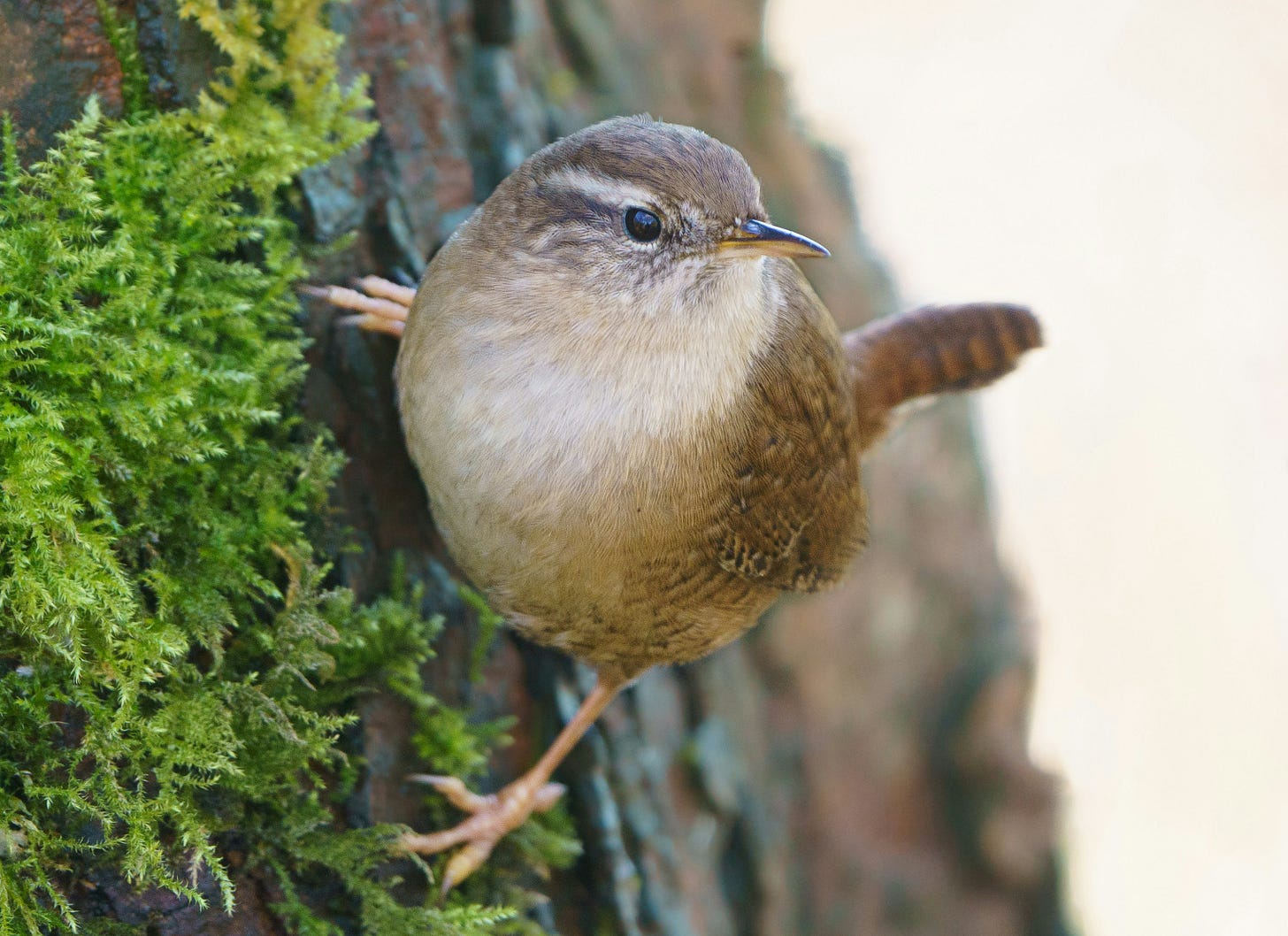
I’m sorry to say, that I didn’t manage to capture any baby foxes on my wildlife camera this year. I do hope to have better luck next year! Besides, I can’t complain as the juvenile badgers made up for it. However, I do have two new foxy youths who are now frequenting the bottom of the garden, enjoying their nightly dog biscuits. I believe them to be the offspring of my vixen – who sadly has not been spotted for a while.
In bird news, our collared dove pair had two successful broods this year, in their rather precarious looking nest behind the air conditioning unit. They did try for a third but quickly abandoned that project, deciding three kids was enough for one year. We now have a clan of doves that hang out in the wildlife garden.
Sadly, my swallows did not fare so well. One day I was delighting in the little open beaks peeking out of their nest in the garage, as their parents swooped in and out with a beak full of bugs. The next day, after an intense heatwave, their fragile little bodies were scattered on the floor, and the nest was empty. I was devastated. I still am. But I know there is nothing I could have done for them. Nature regularly teaches me that there are some things I cannot control.
After all the fledglings in May, I didn’t find any more nests. But I did spot a juvenile woodpecker in the wildlife garden, and both our crows and magpies had several youngsters. I named one of the magpies Fred, he had so much personality, as you can see in the video below. He was king of the wildlife garden for a time, and you could hear him a mile off, shouting to be fed. Eventually he was usurped by an equally vocal baby crow we affectionately nicknamed ‘Mouth’.
I do hope you enjoyed this update on some of my nature encounters over the summer. I’ll be back soon to share September, possibly my favourite month of the year, and I look forward to introducing you to a couple of new characters who are sharing my garden space - with a spotlight on badgers.
I’ve missed being here on Substack amongst my fellow nature lovers. How was your summer? Did you have any unexpected wildlife encounters? What were some of the nature highlights for you?


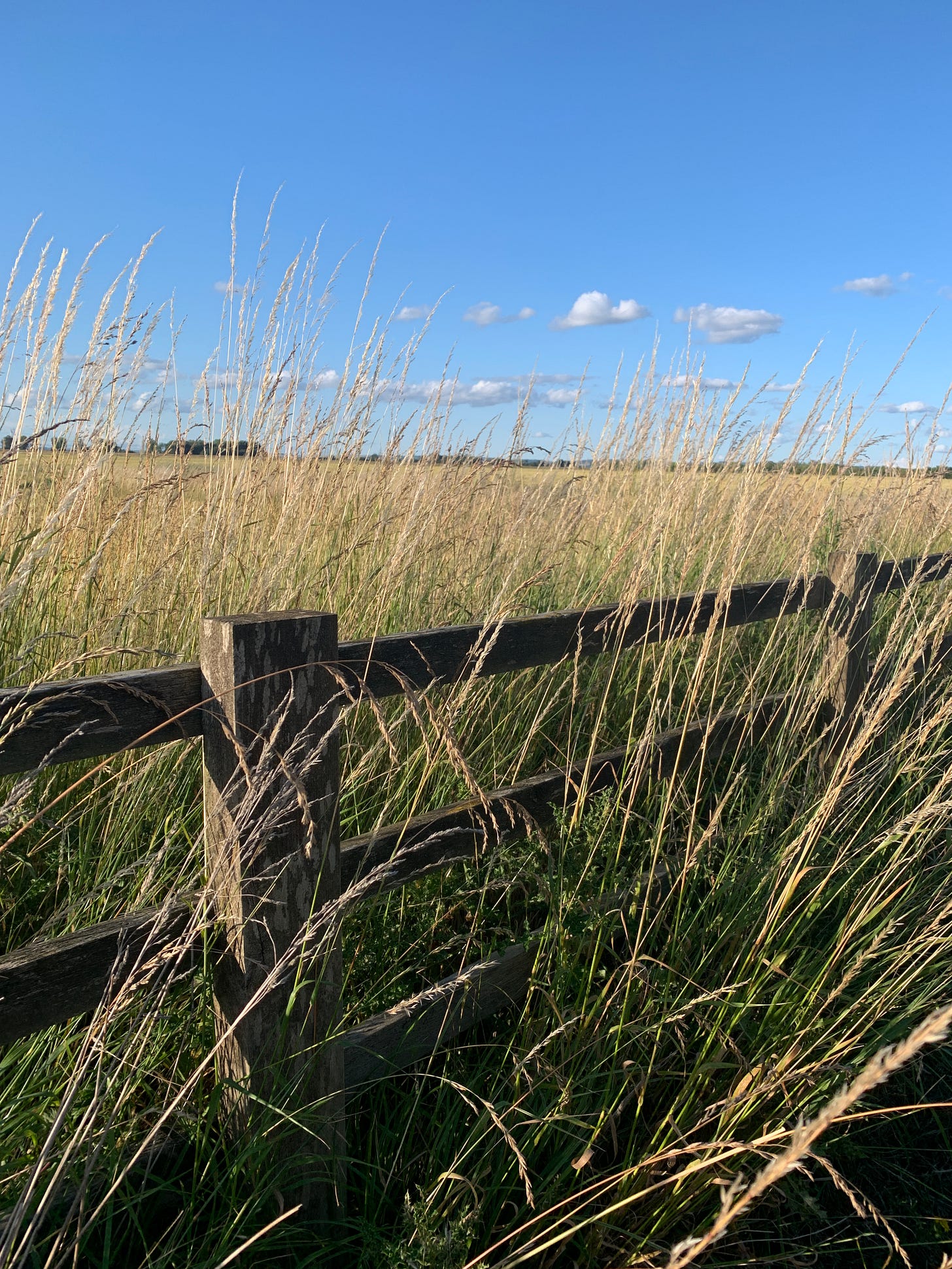
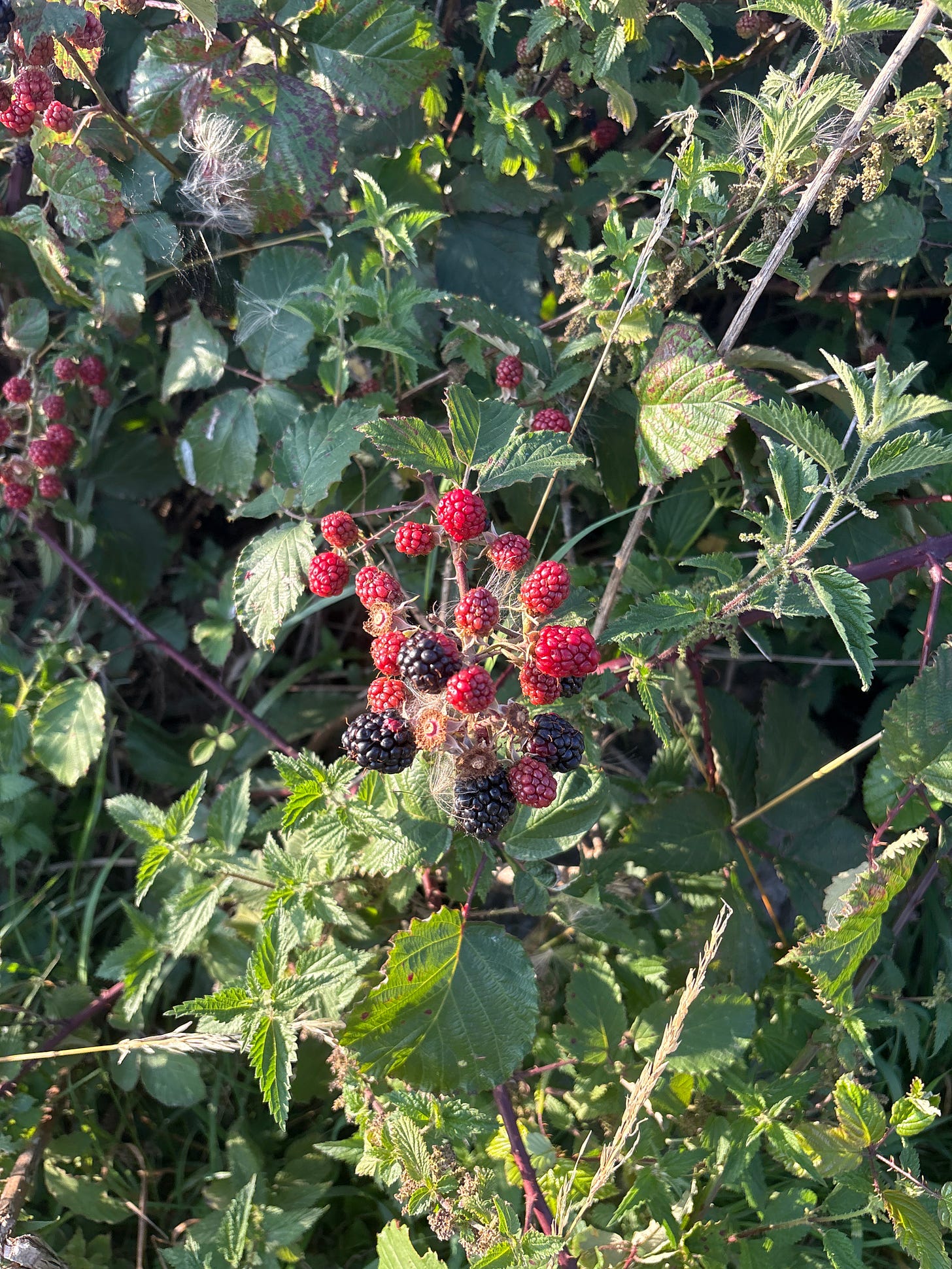
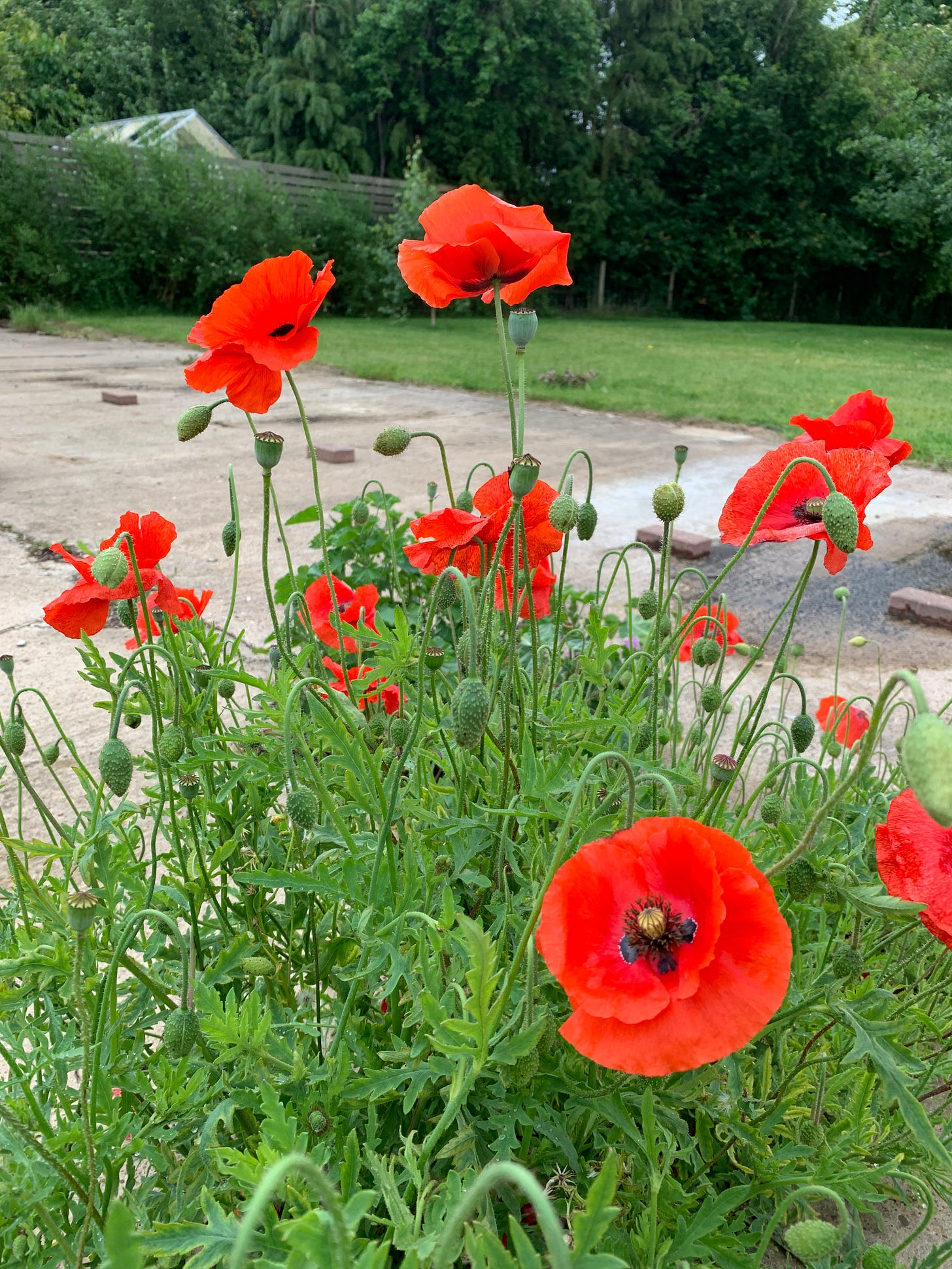
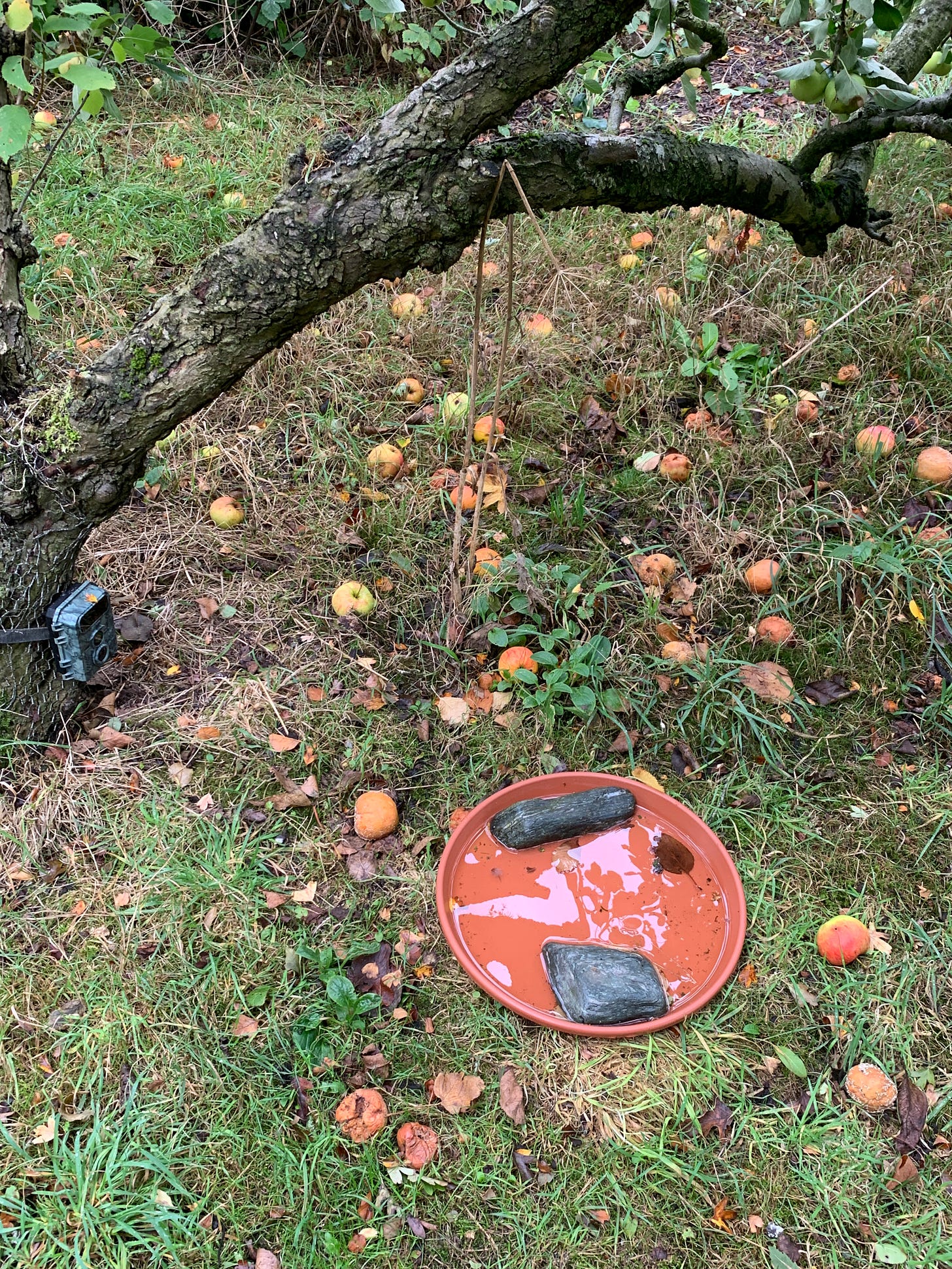
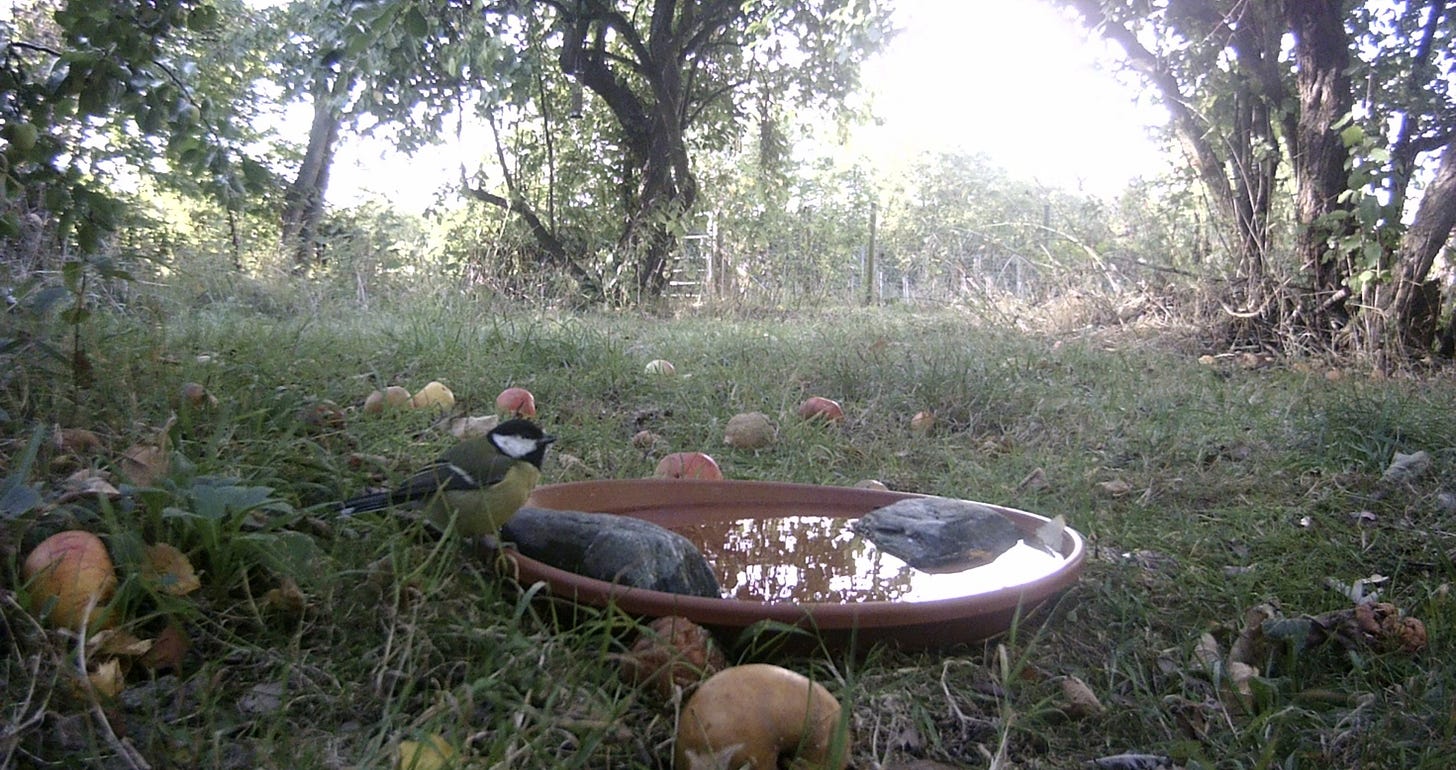
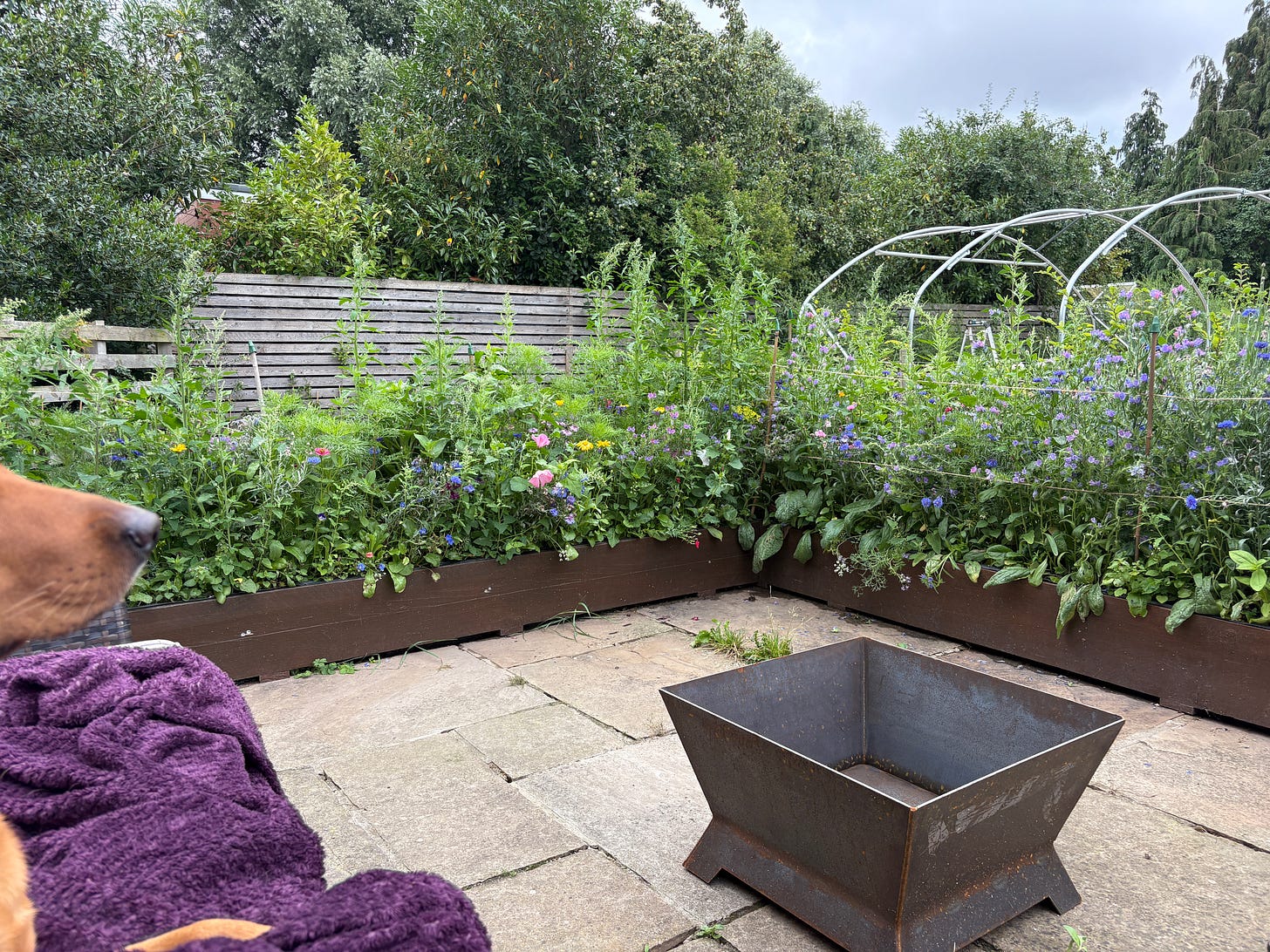
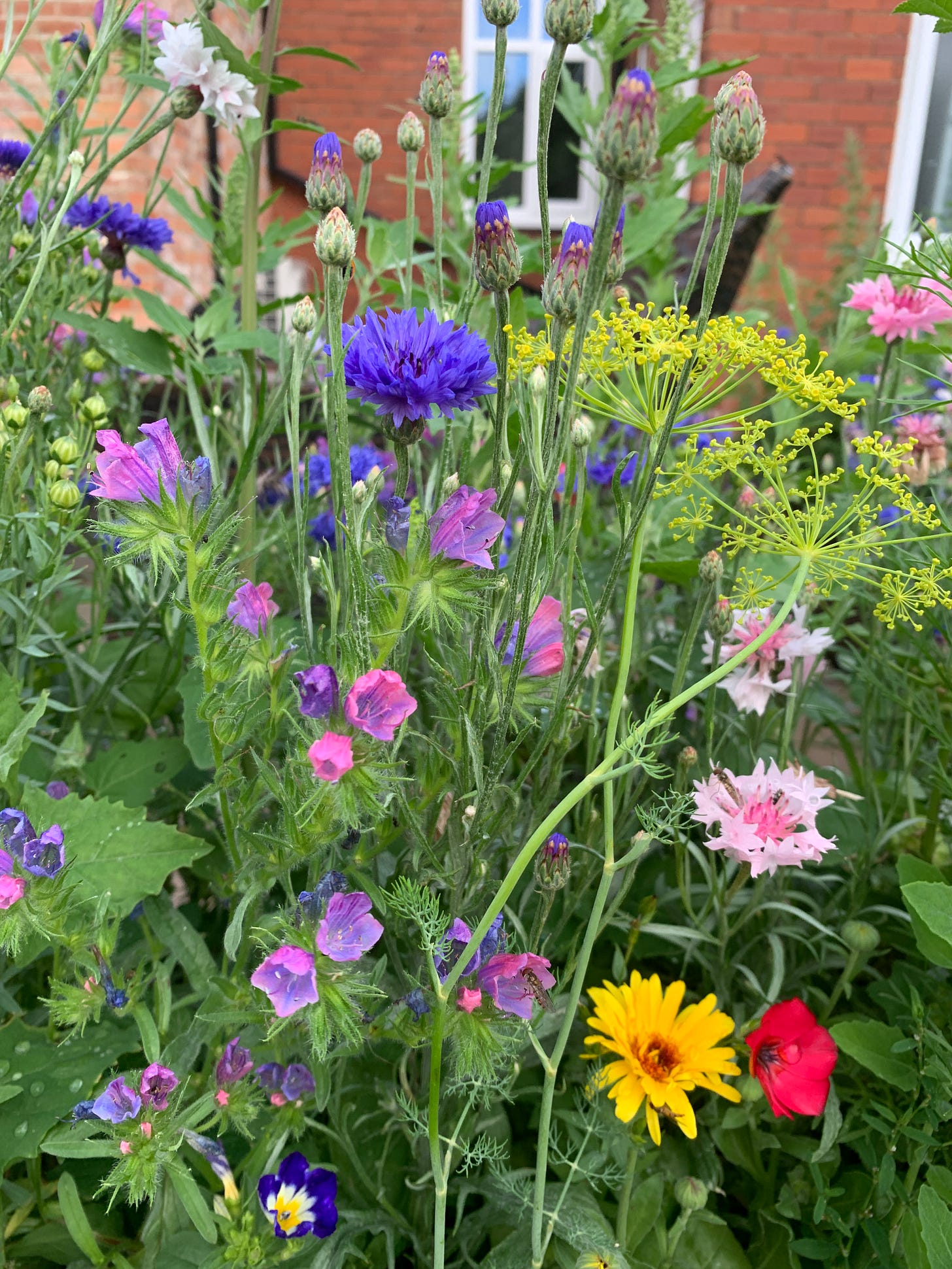
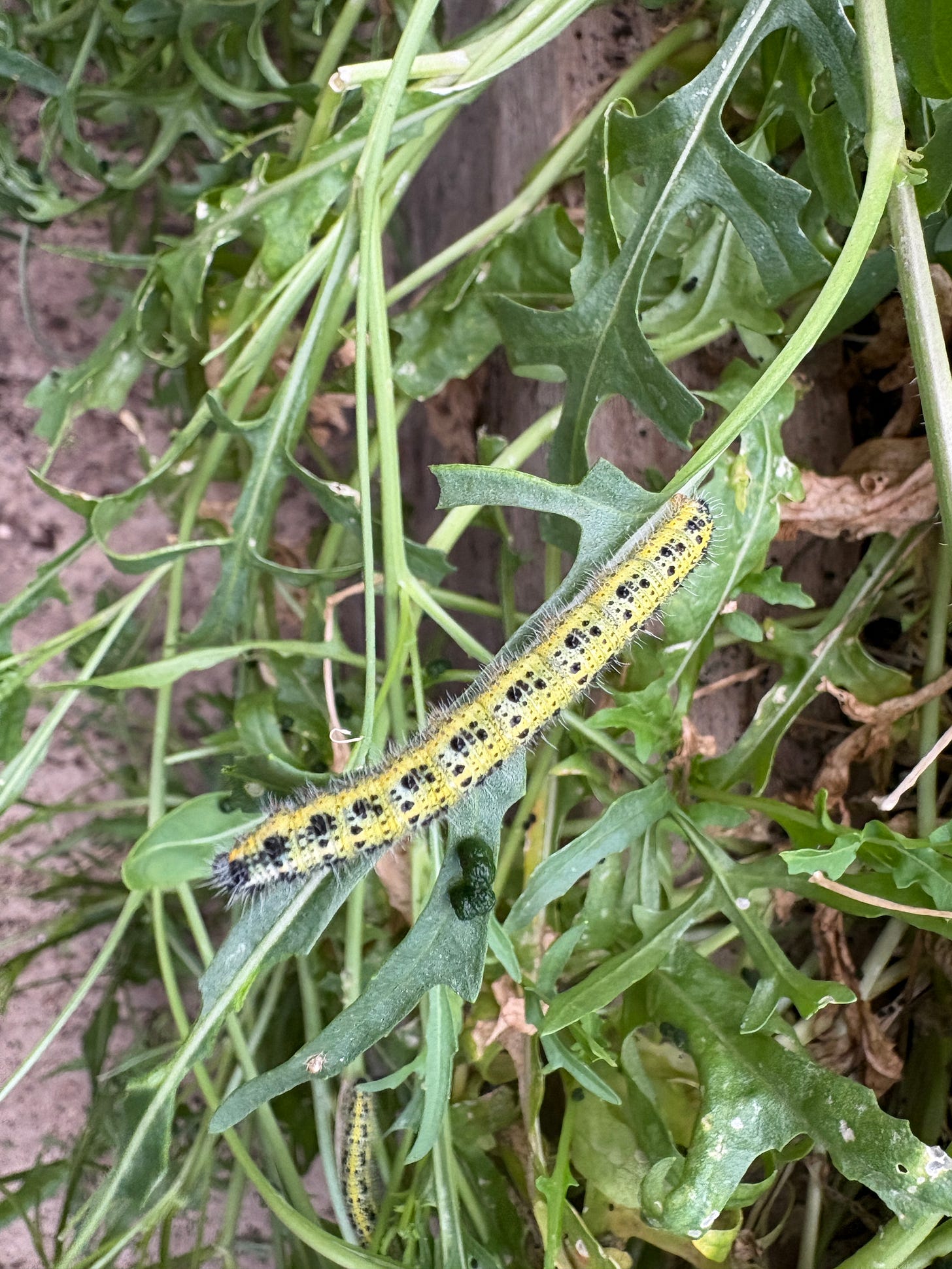
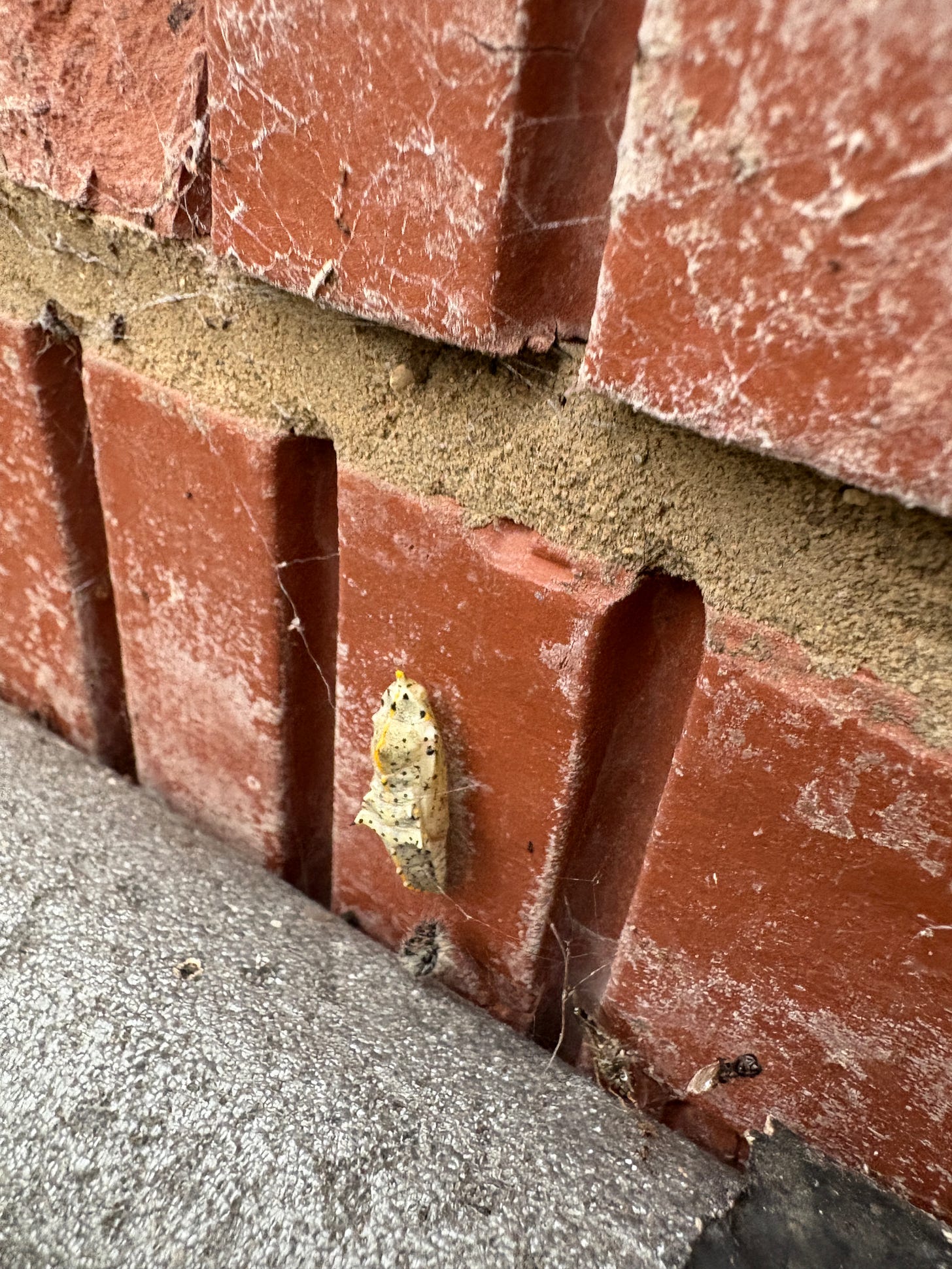
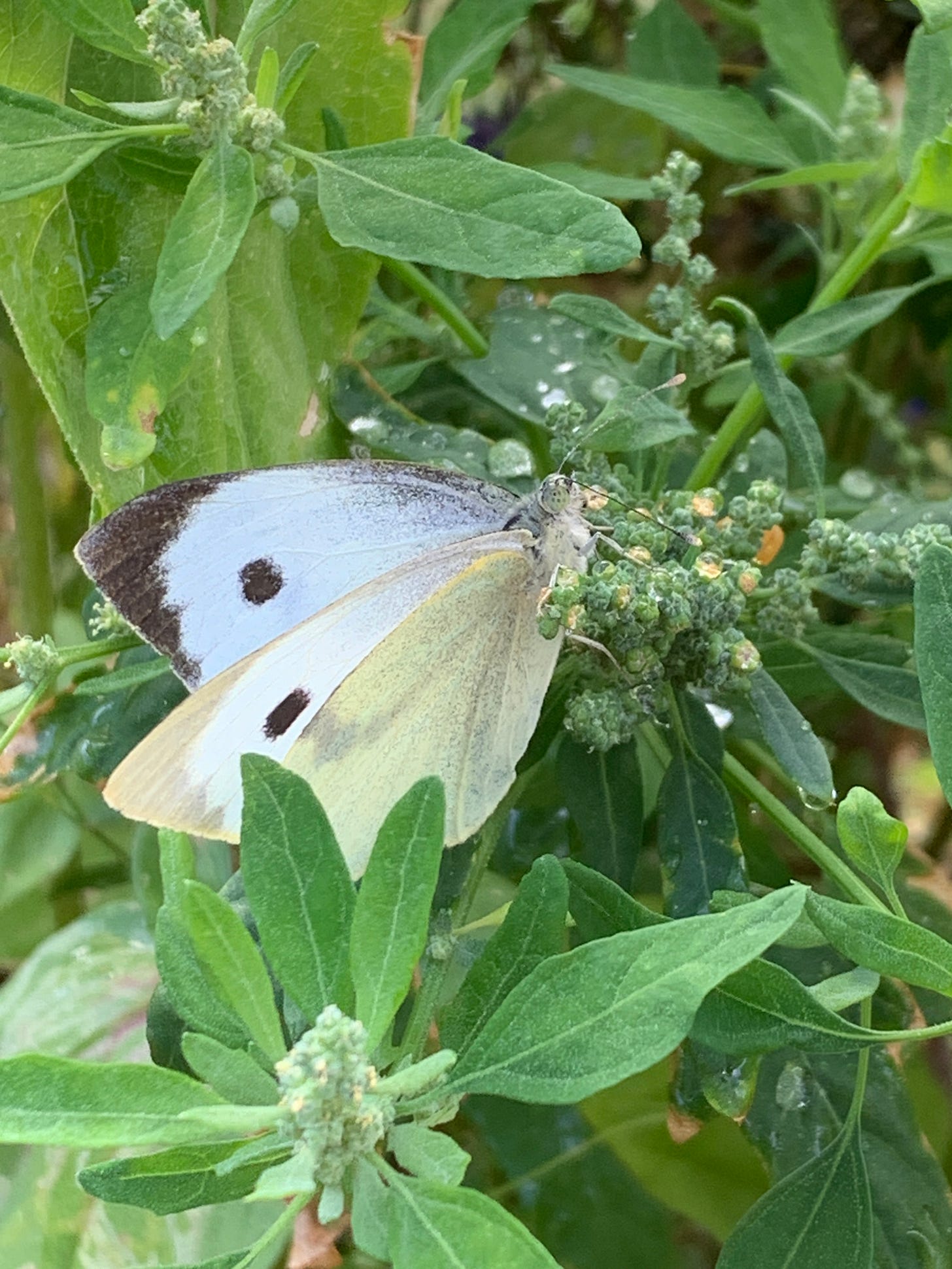
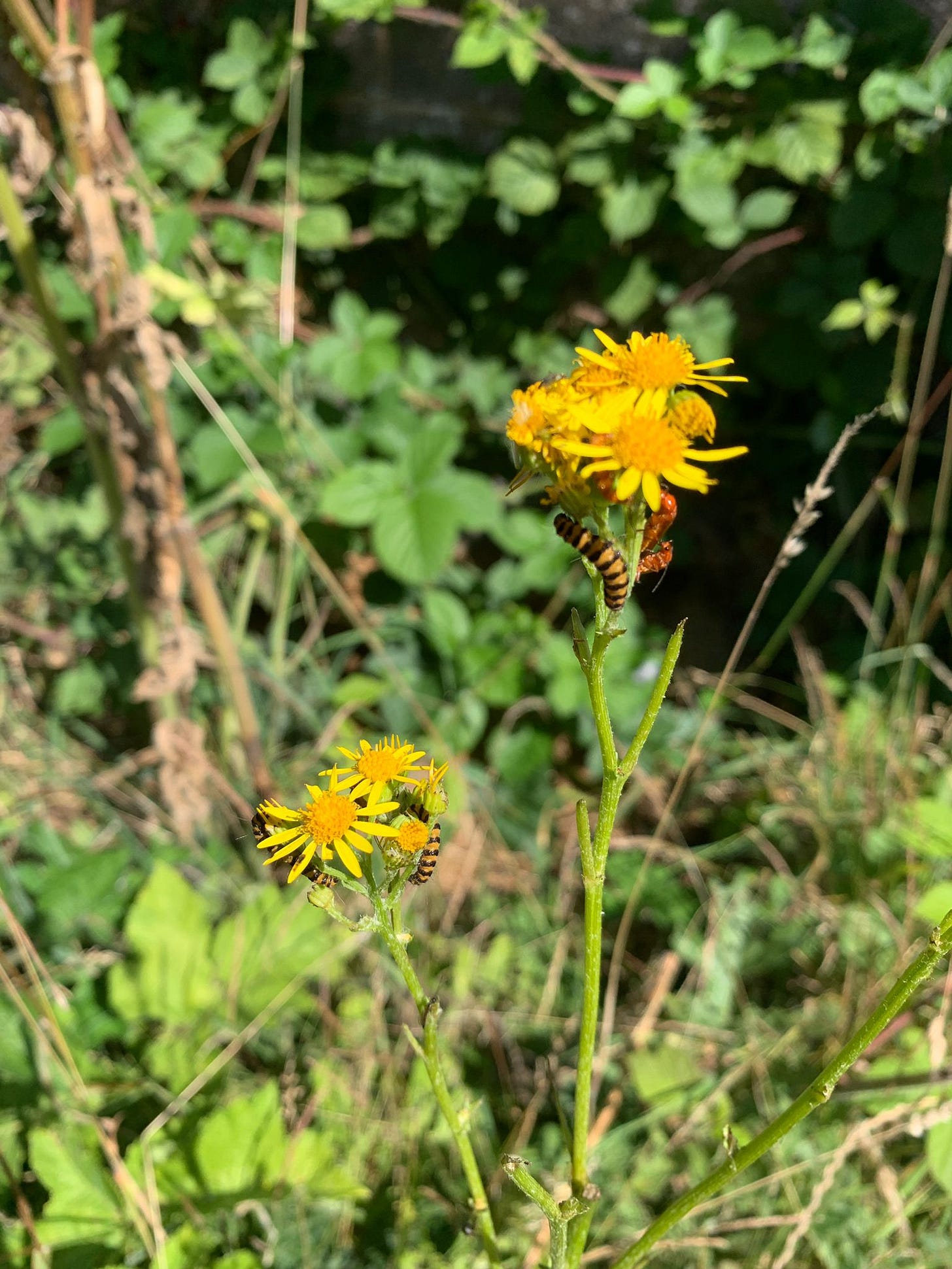
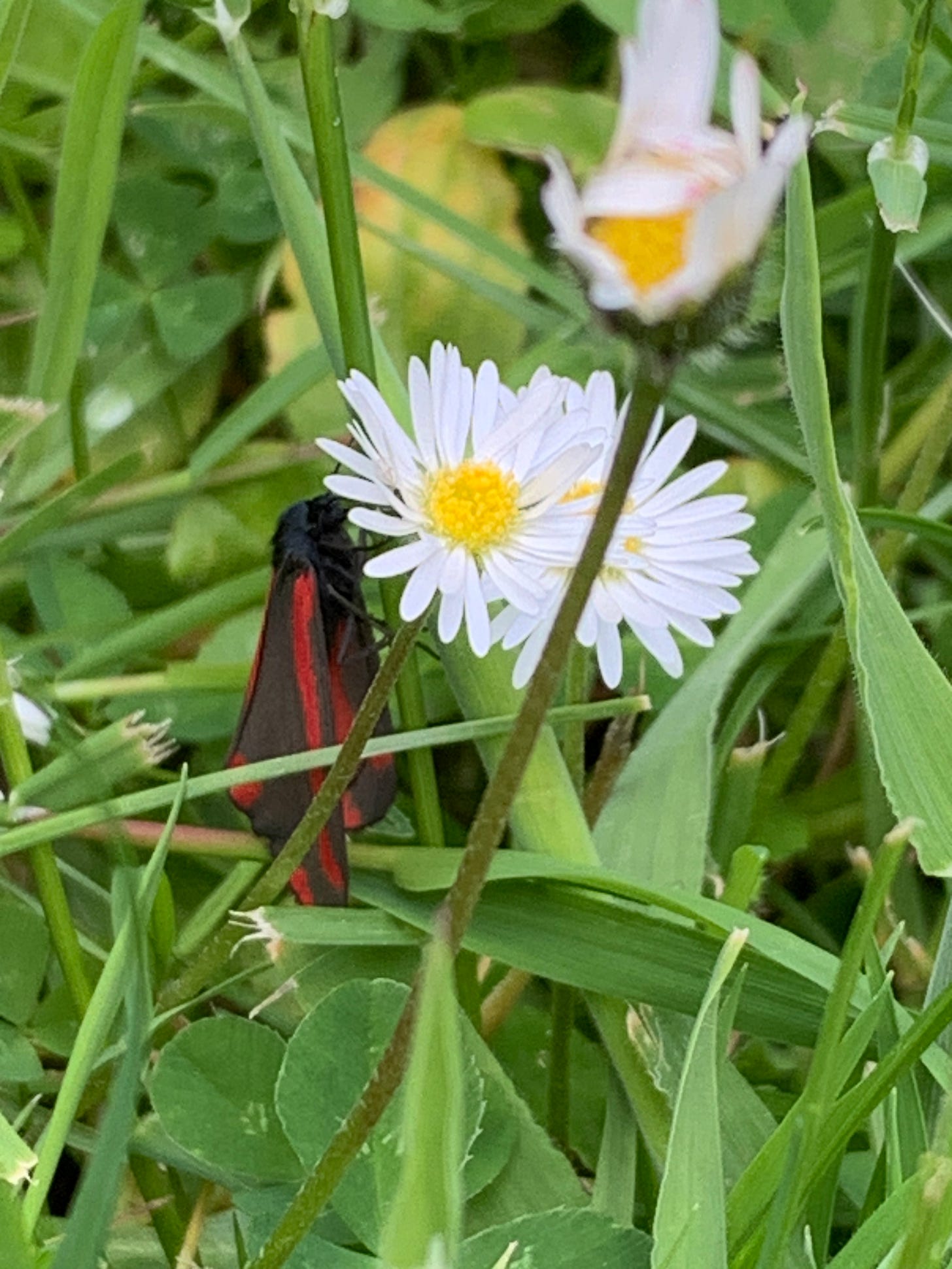
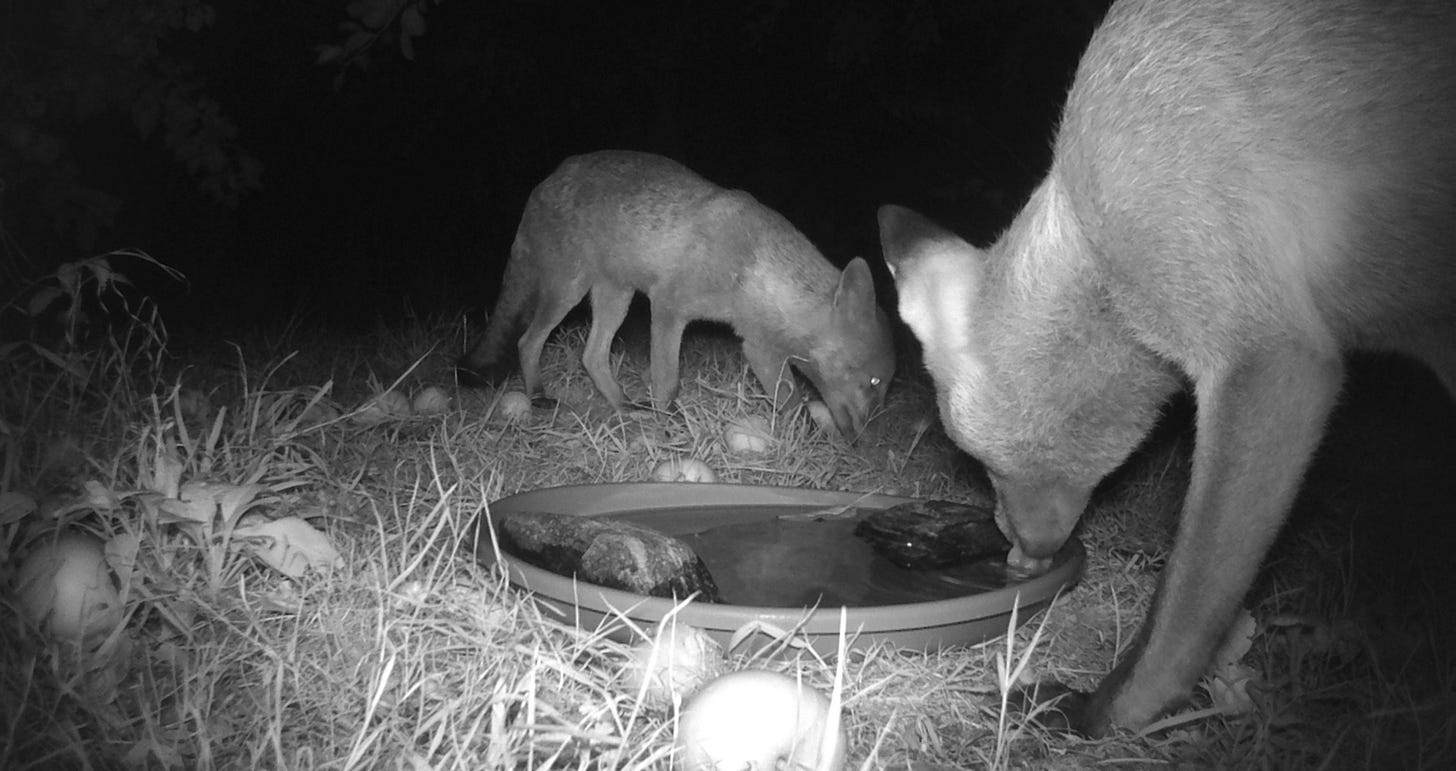
Amazing!!! Love all those ladybirds, wow.
What a wonderful Summer you had! So happy to see your note and really looking forward to reading what comes to you in Autumn.
Before I forget... your photos of the foxes at the watering station are phenomenal! It's inspired me to create one on an old pine tree stump. Do you use a wildlife cam for this? Can you recommend one???